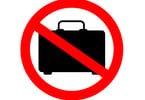WASHINGTON – The terrorist attacks in India, riots in Greece and unrest in other parts of Europe are giving some Americans second thoughts about traveling abroad.
To help guide U.S. citizens, the State Department issues travel advisories that can range from moderate warnings to recommendations to stay away from certain nations.
Last month’s violence in Mumbai, which killed more than 170 people, including six Americans, prompted the department to issue a travel alert for India.
Though the department cannot prevent Americans from traveling to certain destinations, it can recommend against it based on intelligence from within the department and embassies and consulates abroad.
In an interview with Gannett News Service, Michelle Bernier-Toth, director of the Office of American Citizens Services and Crisis Management, explains how the department issues travel advisories and what those advisories can mean for travelers, foreign countries and the United States.
Question: What exactly is a travel advisory and how should American travelers respond to it? For instance, should they cancel their trip if a travel alert or travel warning is issued for their destination?
Answer: Travel alerts are aimed at threats that we believe are of somewhat short-term duration. That could be violence surrounding an upcoming election in the country, it might be a hurricane that’s barreling down on us or threat information we’ve gotten that is considered of relatively short-term duration.
A travel warning is issued when it’s more chronic, the obvious ones being places like Afghanistan, Iraq, where the situation is so difficult and potentially dangerous for Americans that we want them to know about that.
The traveler should look very carefully at what the alert is about. Each person has a different risk-tolerance level. We cannot tell people not to travel. We can recommend against it, but we can’t prevent people from traveling to a country where we have a travel warning. So they have to make their own decisions.
Q: How does the department come up with these advisories?
A: It’s a very collaborative process between our embassy and consulate, between various bureaus and offices within the department.
Q: Are travelers to all the countries on the alert list in the same amount of danger or do some countries pose a greater risk than others? Is there any way to distinguish those that are most dangerous?
A: As we’re drafting our travel alerts and warnings, we really think about what it is we’re saying and telling people. Sometimes we tell people to consider the risk of traveling, sometimes we say you should defer nonessential travel or all but essential travel and sometimes we just recommend you don’t go. The best way to figure out what kind of danger you’re facing is to read the specifics of the alert.
Q: What kind of negative effects can issuing a travel alert have on the relationship between the United States and allies?
A: There are countries that let us know that they do not agree with or see the need for a travel alert or travel warning. Our response is always that we must put the welfare and safety of American citizens first, that travel warnings and alerts are not political documents. They are aimed at the traveling American public for safety and security reasons.
Q: What’s the easiest way for people traveling abroad to find out if a travel alert or warning has been issued for their destination?
A: Our Web site, www.travel.state.gov. We can post updated messages to that and we have the capability to do it after hours as well. So the goal is always to get it up as quickly as possible.
WHAT TO TAKE AWAY FROM THIS ARTICLE:
- In an interview with Gannett News Service, Michelle Bernier-Toth, director of the Office of American Citizens Services and Crisis Management, explains how the department issues travel advisories and what those advisories can mean for travelers, foreign countries and the United States.
- A travel warning is issued when it’s more chronic, the obvious ones being places like Afghanistan, Iraq, where the situation is so difficult and potentially dangerous for Americans that we want them to know about that.
- Are travelers to all the countries on the alert list in the same amount of danger or do some countries pose a greater risk than others.






















